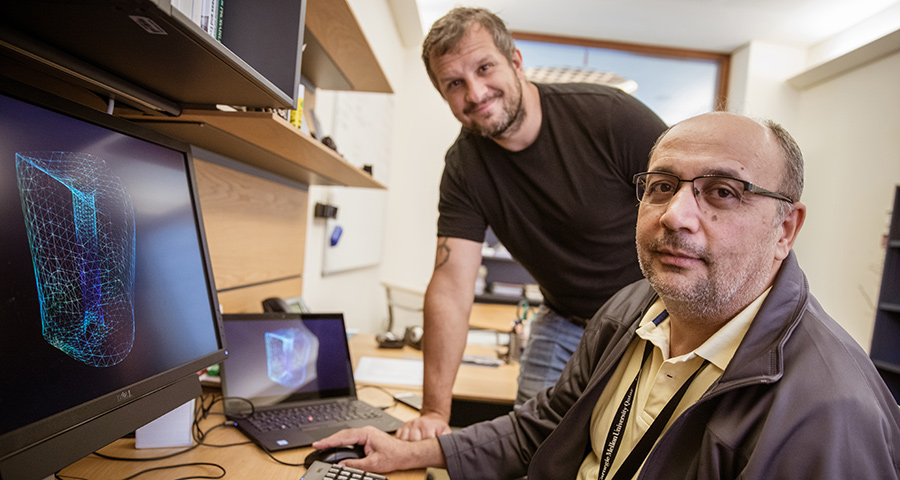
CMU-Q researchers explore the mathematics of personalized medicine
A research team from Carnegie Mellon University in Qatar (CMU-Q) has created a mathematical model to predict how human tissue responds to the physical stresses of pregnancy. Hasan Demirkoparan and Heiko Topol’s digital 3D model could lead to a new tool for doctors to measure the risk of miscarriage or pre-term delivery.
The model may be particularly useful in the area of personalized medicine in prenatal care. If doctors apply the model using information from a patient’s scans, they may be able to forecast—and adjust treatment to accommodate—a woman’s risk for pre-term delivery or miscarriage.
At first glance, Demirkoparan and Topol seem unlikely candidates to research questions in prenatal health care: Demirkoparan is an associate professor of mathematics at CMU-Q, and Topol is a post-doctoral researcher with a background in mechanical engineering.
“We have approached this question from a mathematical and mechanical engineering perspective,” said Topol. “Biological modelling is not an obvious topic for a mathematician and a mechanical engineer, so we have read a lot about the different factors and stresses on human tissue.”
A decade of exploration
Demirkoparan began studying the mathematics of soft tissue swelling more than a decade ago, with research into how hyperelastic materials respond to stress and swelling.
“Materials deform when they are stressed, and when the deformation is large, more sophisticated mathematical methods are required to describe the strain,” said Demirkoparan. Hyperelastic materials, in particular, stretch and strain in ways that are complicated to predict.
When Demirkoparan joined the faculty of CMU-Q as a teaching professor, he looked for ways to continue with his research. Two of his projects were accepted in Cycle 4 of Qatar National Research Fund’s National Priorities Research Program (NPRP). The projects explored how Demirkoparan’s previous work with hyperelastic materials might apply to how biological tissue behaves under stress.
From a mathematical standpoint, soft tissue is an outstanding example of complex compliant media.
“The NPRP grant was crucial to this research,” says Demirkoparan. “My primary focus is teaching at CMU-Q, but the grant has made it possible for me to hire a researcher so I can pursue this area of investigation.”
For the eighth NPRP cycle, Demirkoparan began a project that homed in on how the cervical soft tissue responds to the different physical stressors of pregnancy.
“There is a direct correlation between the length of the cervix during pregnancy and pre-term labor,” Demirkoparan noted. “If we can use mathematics to provide a tool for doctors to better predict, and perhaps mitigate, pre-term births, that would be very gratifying.”
Applications for personalized medicine
Perhaps the most intriguing element of the research is its potential in medical care.
“Research like this is a creative process,” said Topol. “We take a question and brainstorm different approaches and different solutions.”
Both Topol and Demirkoparan can see many ways their research could lead to better diagnostic tools in medicine, including the way arteries and veins respond to stress. As they look ahead, they would like to bring in experts from other disciplines to enhance the model and apply it to a medical setting.
Demirkoparan said, “There are many different groups that are looking at questions like this. To our knowledge, we are the only ones creating a simulation of cervical collagenous tissue in Qatar, and I think our research can contribute a lot to this area of investigation.”
Demirkoparan and Topol most recent article was published in the September-October 2019 issue of European Journal of Mechanics.
